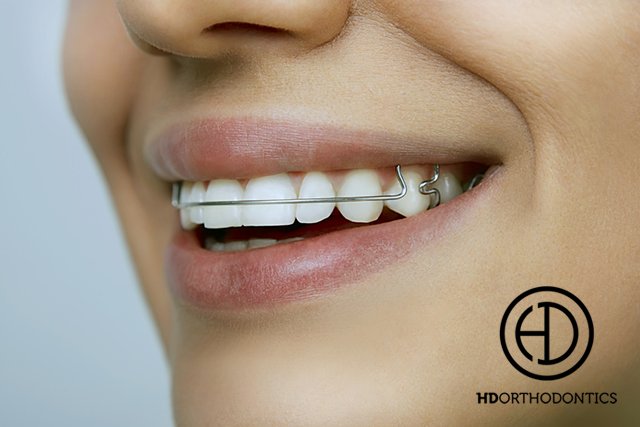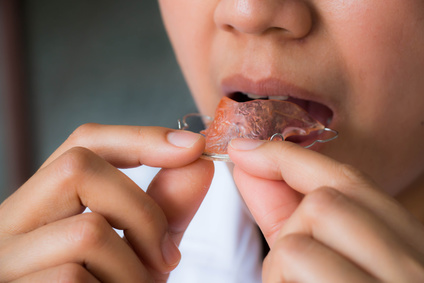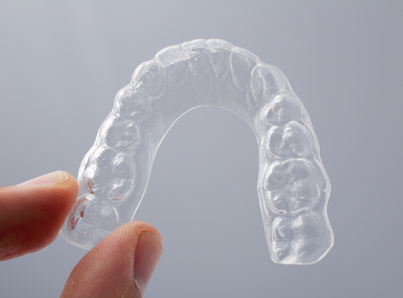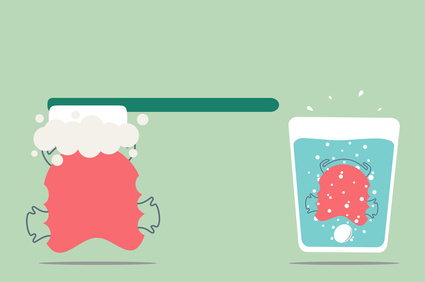Don’t Forget to Wear Your Retainer!

Long Beach, CA – The day you get braces come off is a universally celebrated day. And while showing off your new pearly whites is a great cause for celebration, just because your braces are off doesn’t mean your work has ended.
Retainer wear is crucial for orthodontic patients. Your teeth were gradually moved to their new locations, and it takes some time for the teeth, and bone and tissues that support them to get used to their new alignment. Forgetting to wear your retainer may cause your teeth to relapse back to their original position.
One of the reasons relapse occurs is because the gum tissues contain elastic fibers that attach to the teeth and have a memory, as funny as that may sound. Until the fibers are trained to stay in their new alignment, they will have a tendency to try to pull back to their original conformation and move the teeth with them, similar to a rubber band. For some people, it can take as long as 18 months for these fibers to stabilize.
Additionally, teeth have a natural tendency to shift on their own over time. This can occur in both people who have had orthodontic treatment and those that have not. I encounter adult patients on a regular basis that have had relatively straight teeth their whole life and experience shifting of their teeth and changes in their bite as they age. This is partly due to changes in tonicity of facial and intraoral musculature as well as latent mandibular growth which may occur. While it is a natural process, it can be eliminated or at least minimized by continuing to wear a retainer.
This is why wearing a retainer is actually one of the most important parts of your orthodontic treatment. After investing time and money into achieving a beautiful smile, no one wants to see that effort go to waste.
There are a couple of different types of retainers. Your Long Beach orthodontist will determine which is best for you.
Traditional Removable Retainers
The most common retainer is the traditional removable hawley retainer that is made of colored acrylic and wire. The wire goes over the front of your teeth, and the acrylic is along the inside of the mouth.

Permanent Retainers
A bonded (permanent) retainer is a thin wire that is glued to the tongue side of your teeth, typically the lower six front teeth. We typically do not recommend bonding a fixed retainer to the upper teeth, as the lower teeth tend to hit the wire and glue when biting down, causing the retainer to come loose.
Clear Overlay Retainers
There are also clear overlay retainers that look similar to mouthguards or Invisalign aligners. These types of retainers add an extra layer of protection for patients who may clench or grind their teeth, providing cushion and preventing cracks in the teeth from to the pressure.

Your orthodontist will create a schedule for retainer wear. Most will advise wearing the retainer full-time for the first year after your braces come off. That means the retainer should only be taken out when eating, brushing and flossing. After a certain period of time, your orthodontist may recommend changing to only wearing at night. How and when your retainer is worn will vary depending on your specific needs.
At HD Orthodontics, I advise all of my patients to wear their retainer full-time for the first year, then nighttime for a lifetime. Relapse studies have shown that teeth can move even 10 to 20 years after orthodontic treatment, which is why I believe it is so important for patients to continue to wear their retainers for life.
The only way to guarantee that your bite remains stable and your teeth stay in proper alignment is to wear your retainer as directed by your orthodontist. And similar to your orthodontic treatment, how often you need to wear your retainer is unique to you. You can’t compare with your friends or family members, or adjust how often you wear yours to match someone else. Every person’s mouth is different, and therefore every orthodontic treatment plan, including retainer wear, is customized.

Plastic retainers can warp under hot temperatures, so never place it in hot water or leave it in a hot car. When the retainer isn’t in your mouth, be sure it is in a case so it cannot be easily misplaced. My number one rule is to never wrap your retainer in a napkin, because 90% of the time it will end up in the garbage. If you go for a long period of time without wearing your retainer, and find it no longer fits properly, schedule an appointment with your orthodontist to have a new retainer made. Retainers do not shrink, so if the retainer no longer fits, it is likely due to the teeth having shifted.
By following your orthodontist’s directions on retainer wear, you can ensure a beautiful and stable smile for years to come.

